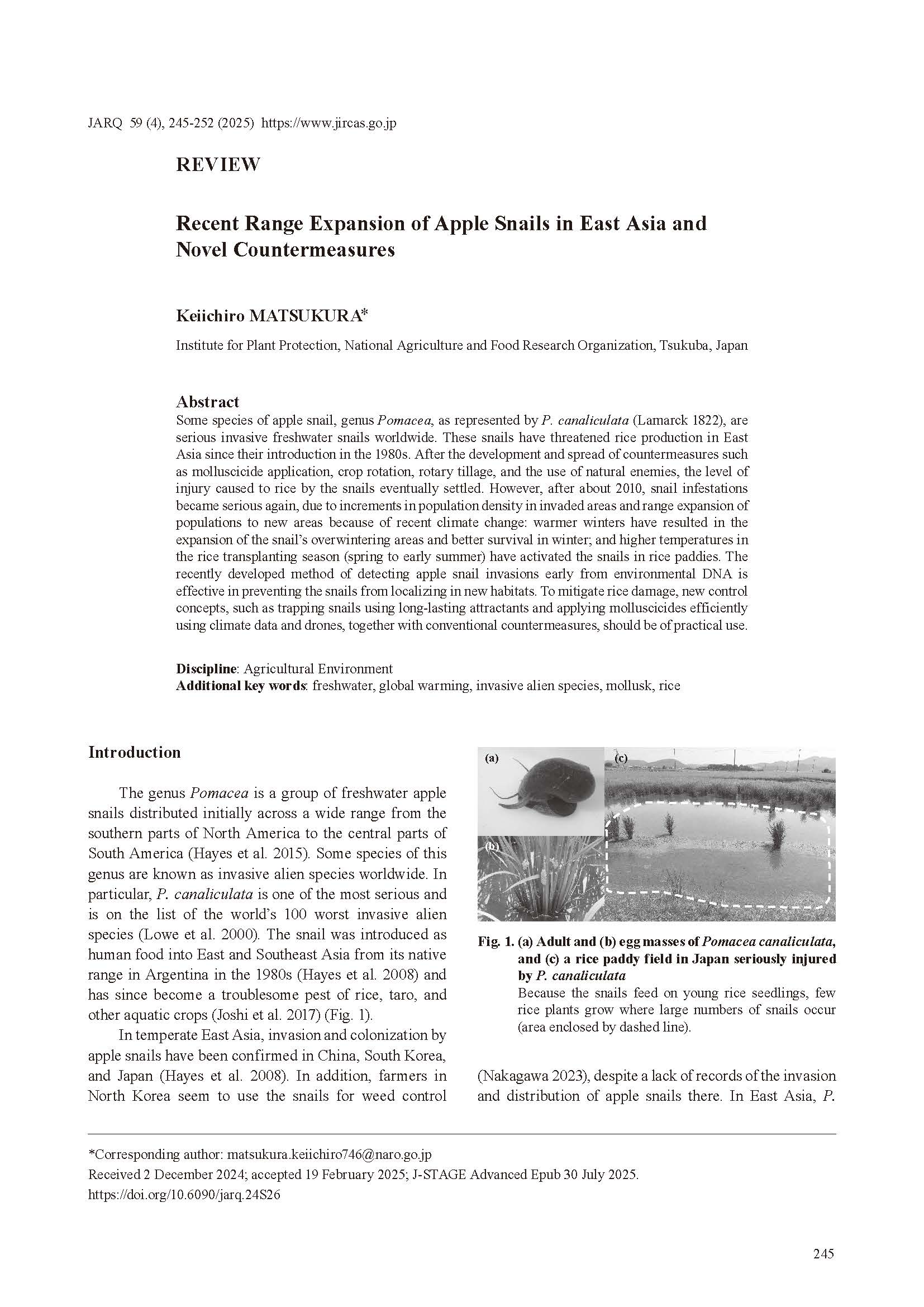Recent Range Expansion of Apple Snails in East Asia and Novel Countermeasures
JARQ : Japan Agricultural Research Quarterly
| ISSN | 00213551 |
|---|---|
| 書誌レコードID(総合目録DB) | AA0068709X |

本文フルテキスト
jarq59-4_245-252.pdf1.85 MB
Some species of apple snail, genus Pomacea, as represented by P. canaliculata (Lamarck 1822), are serious invasive freshwater snails worldwide. These snails have threatened rice production in East Asia since their introduction in the 1980s. After the development and spread of countermeasures such as molluscicide application, crop rotation, rotary tillage, and the use of natural enemies, the level of injury caused to rice by the snails eventually settled. However, after about 2010, snail infestations became serious again, due to increments in population density in invaded areas and range expansion of populations to new areas because of recent climate change: warmer winters have resulted in the expansion of the snail’s overwintering areas and better survival in winter; and higher temperatures in the rice transplanting season (spring to early summer) have activated the snails in rice paddies. The recently developed method of detecting apple snail invasions early from environmental DNA is effective in preventing the snails from localizing in new habitats. To mitigate rice damage, new control concepts, such as trapping snails using long-lasting attractants and applying molluscicides efficiently using climate data and drones, together with conventional countermeasures, should be of practical use.
| 刊行年月日 | |
|---|---|
| 作成者 | Keiichiro MATSUKURA |
| 著者キーワード | freshwater global warming invasive alien species mollusk rice |
| 公開者 | Japan International Research Center for Agricultural Sciences |
| 受付日 | 2024-12-02 |
| 受理日 | 2025-02-19 |
| オンライン掲載日 | |
| 巻 | 59 |
| 号 | 4 |
| 開始ページ | 245 |
| 終了ページ | 252 |
| DOI | 10.6090/jarq.24S26 |
| 言語 | eng |
